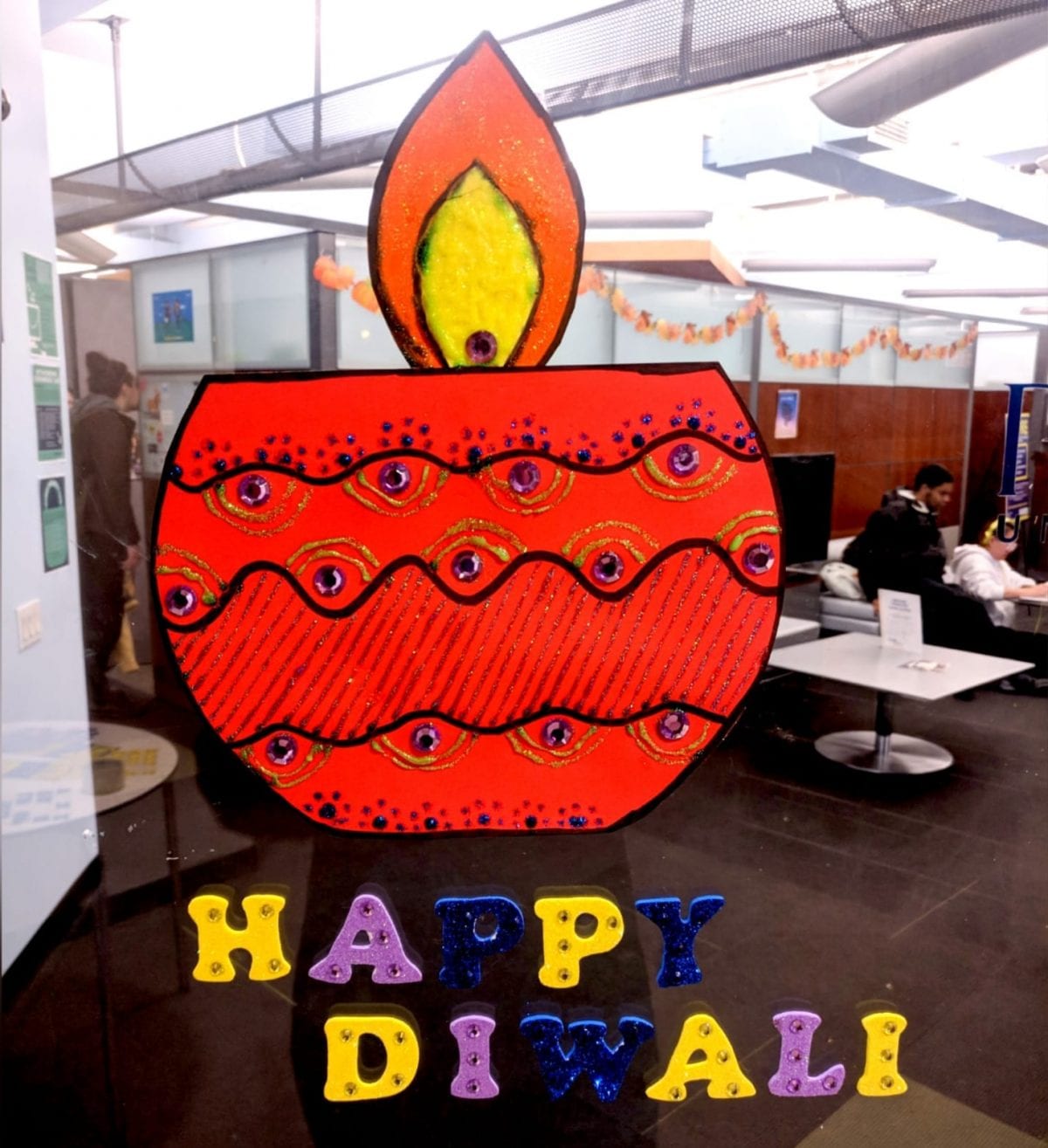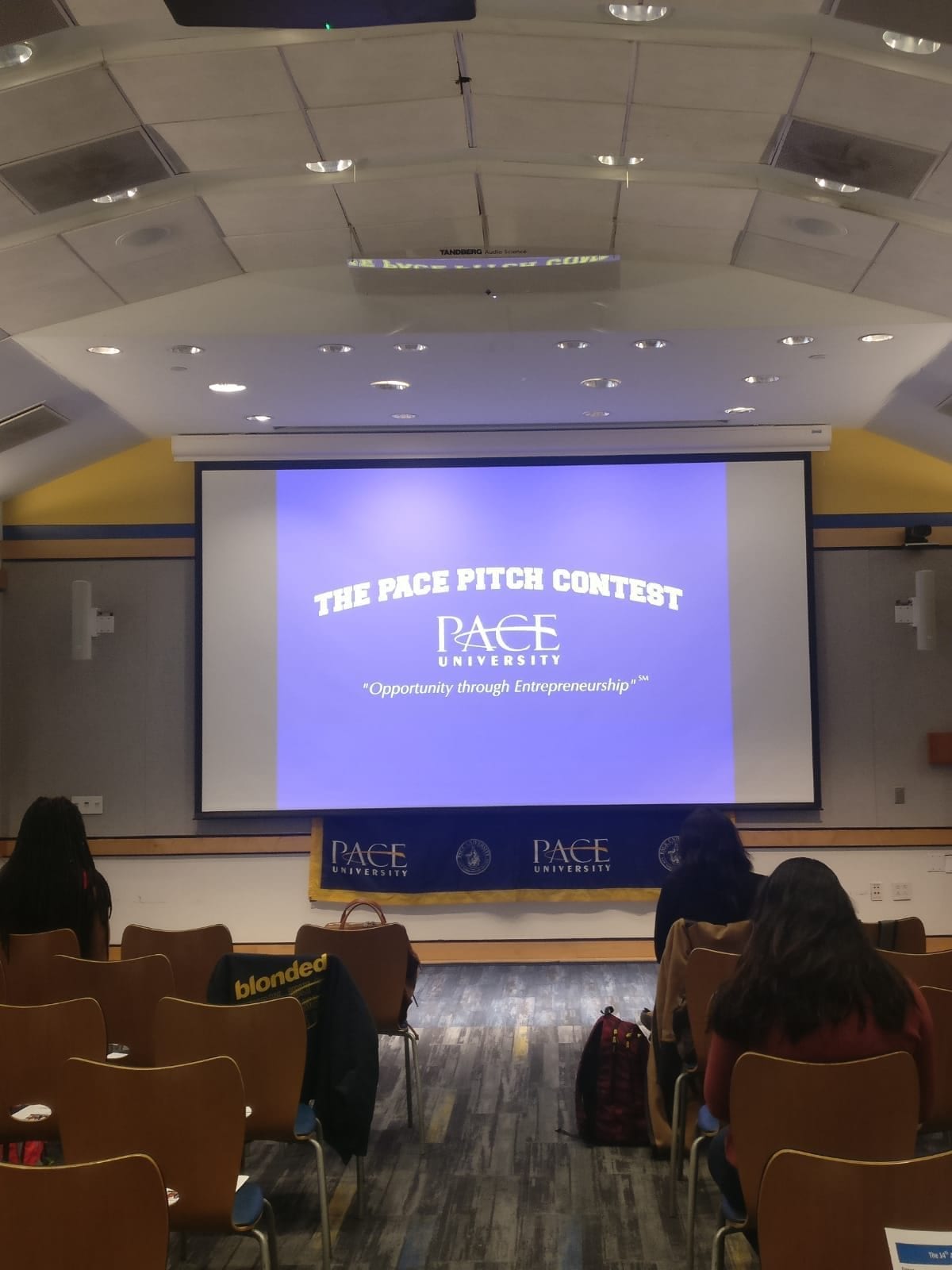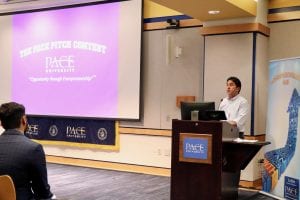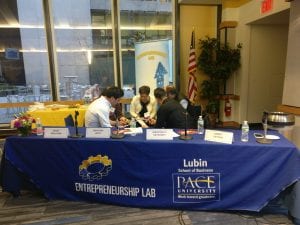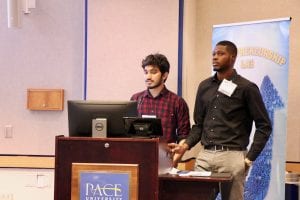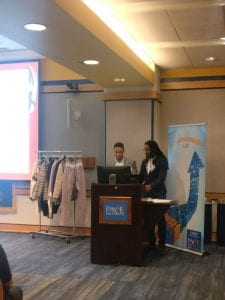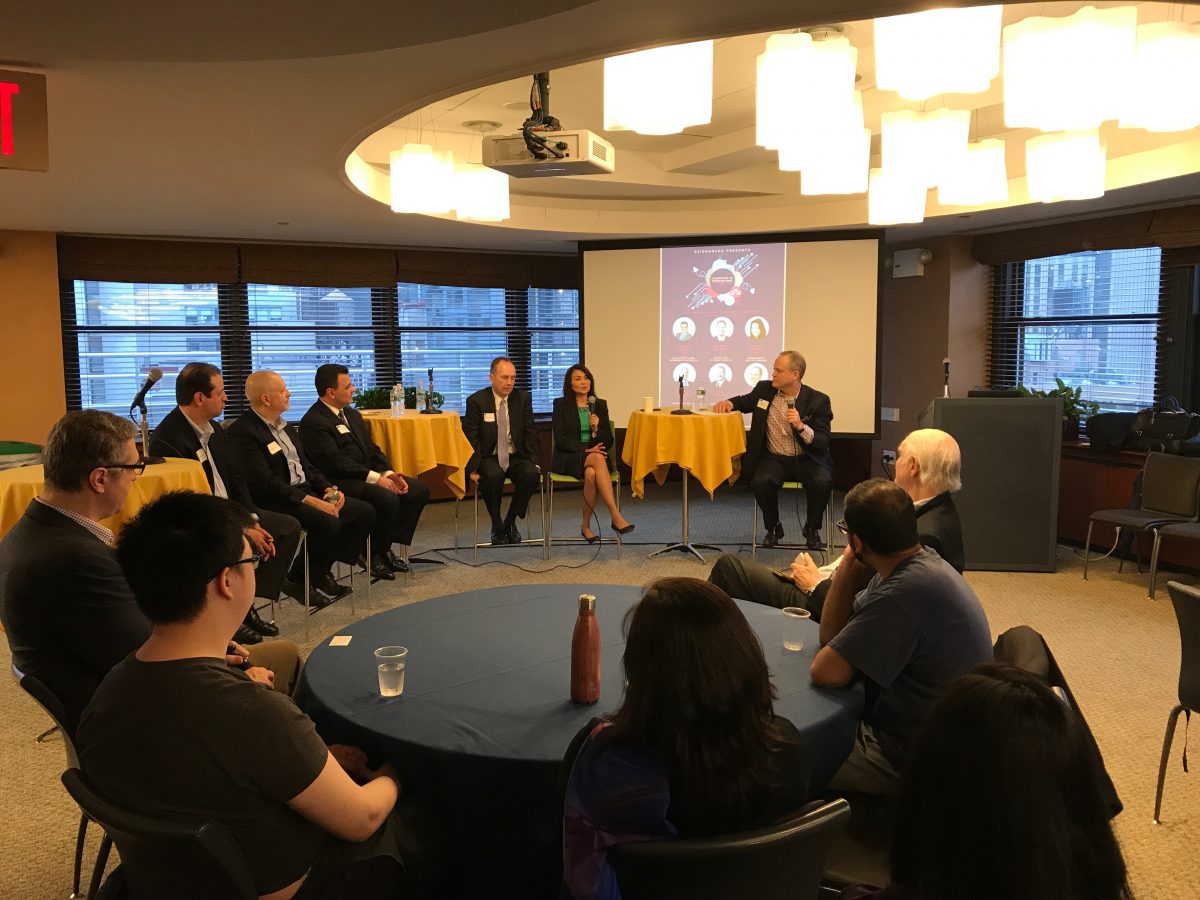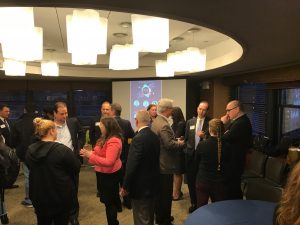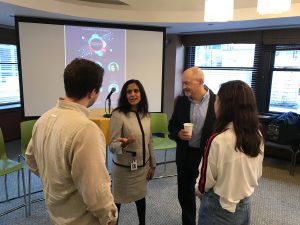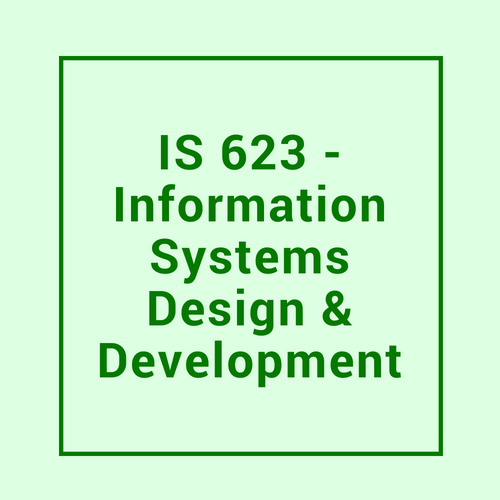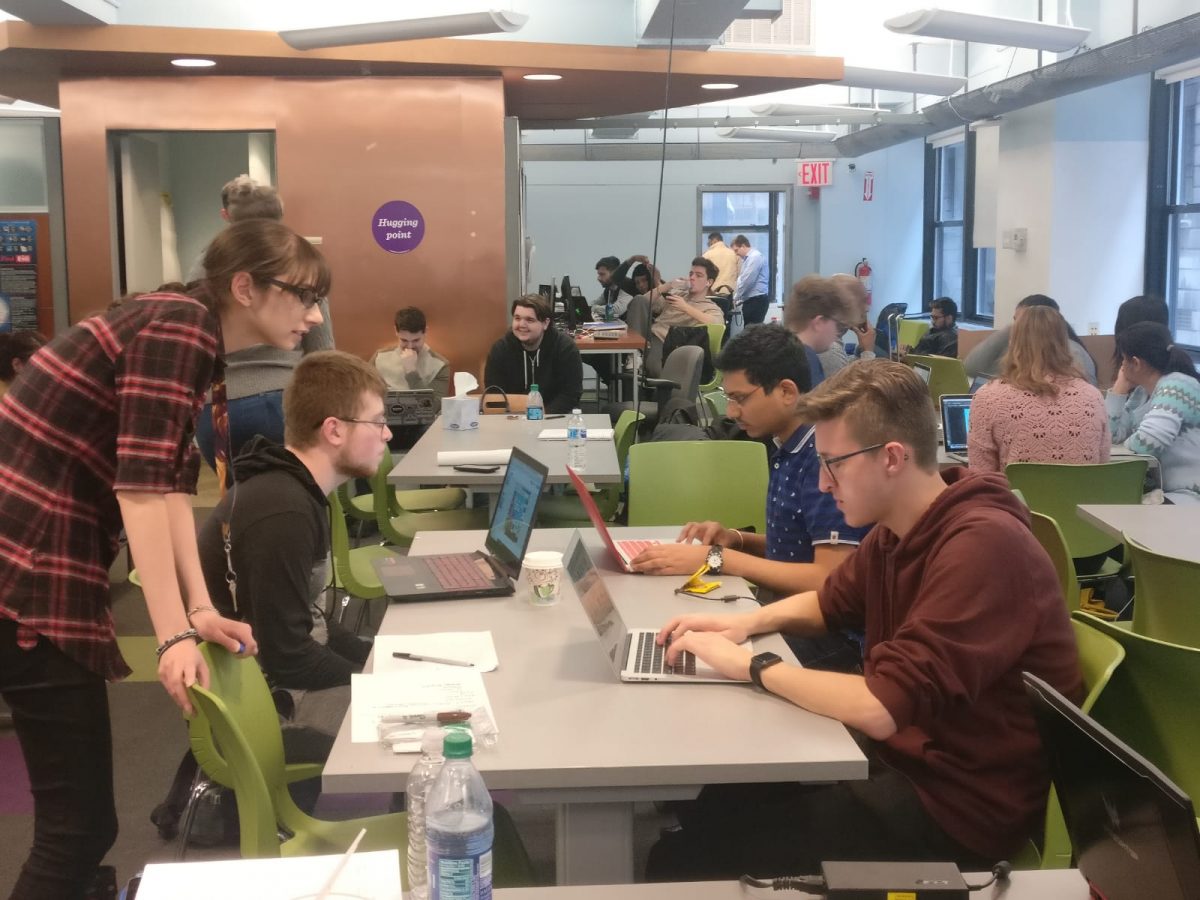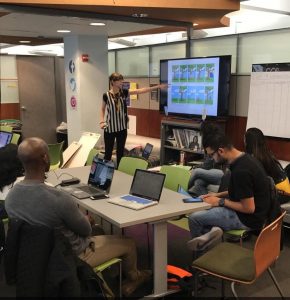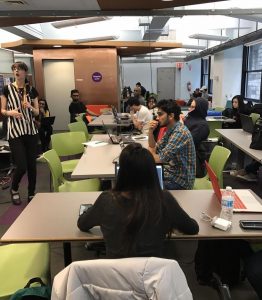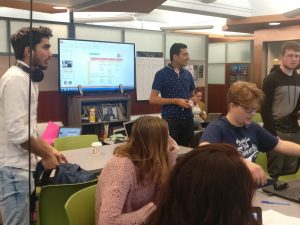 “Doubt is like darkness, trust is like light. There is no way to destroy light by throwing darkness into it. So come together and enjoy the festival of lights!”
“Doubt is like darkness, trust is like light. There is no way to destroy light by throwing darkness into it. So come together and enjoy the festival of lights!”
On Tuesday, November 6, Pace University’s Seidenberg School of Computer Science and Information Systems celebrated Diwali.
The festival of Diwali originates from India, where it is commonly called the “Festival of Lights”. On the day of Diwali every house is decorated with lots of lights and lanterns. “Laxmi,” the goddess of strength, prosperity, love and wealth, is worshiped on Diwali. People wear traditional Indian clothes and enjoy Diwali night with delicious food and beautiful fireworks.
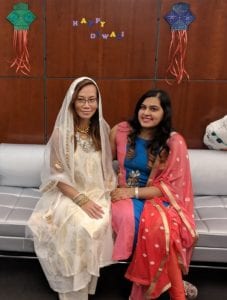 The Seidenberg Diwali celebration was held at the Seidenberg Lounge, located at 163 William Street. The entrance was decorated with a colorful Rangoli—an art form originating from India, in which patterns are created on the floor or ground using colored sand or flower petals. Rangoli is thought to bring good luck.
The Seidenberg Diwali celebration was held at the Seidenberg Lounge, located at 163 William Street. The entrance was decorated with a colorful Rangoli—an art form originating from India, in which patterns are created on the floor or ground using colored sand or flower petals. Rangoli is thought to bring good luck.
Students, faculty, and staff attended the event wearing traditional Indian attire. Even the Dean of the Seidenberg School, Dr. Jonathan Hill, as well as Director of Development Deth Sao wore colorful Indian clothes they had purchased on trips to India to meet with prospective Seidenberg students.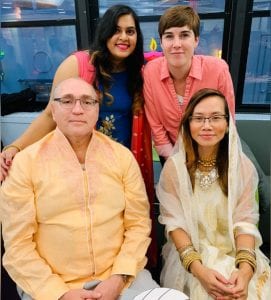
The event started with lantern decorations. Everyone was provided with lanterns, diyas (candles decorated in Indian style), and all the decoration materials. Dean Hill, staff members Katie Todd, Deth Sao, Stephanie Elson, and Melanie Madera sat down with a crowd of students to color in, add glitter to, and otherwise decorate their 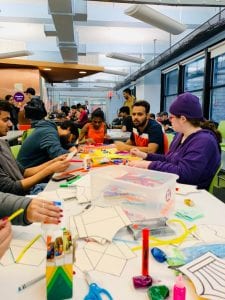 lanterns.
lanterns.
Every design was inventive and unique, enabling our students to show off their creative flair. All of these lanterns and diyas were displayed at the Seidenberg lounge.
After all the decorations were done, it was time for the diya lighting ceremony. It’s an Indian tradition that the first diya must be lit by the head of the family. Dr. Hill did the honors of lighting the first diya in front of goddess, Laxmi, and wished everyone a very happy and prosperous Diwali.
With the ritual done, it was time for food! On this auspicious occasion of Diwali, everyone enjoyed delicious authentic Indian food with lots of chit chatting.
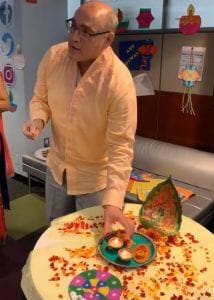 Everyone there shared thoughts about significance of Diwali and exchanged ideas about how Diwali is celebrated in India. It was a good time for all, especially when everyone got to explore lots of ideas regarding this festival.
Everyone there shared thoughts about significance of Diwali and exchanged ideas about how Diwali is celebrated in India. It was a good time for all, especially when everyone got to explore lots of ideas regarding this festival.
Our annual Diwali celebration is always one of our favorites – we are glad that everyone had an amazing time and we look forward to celebrating again next year!


